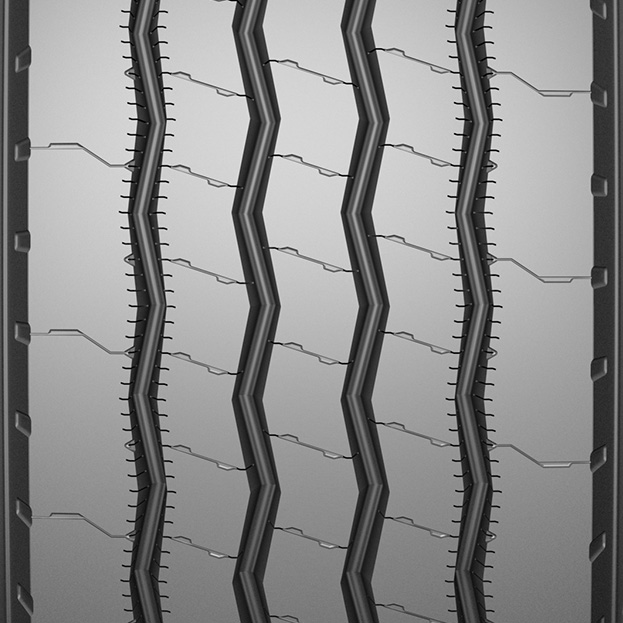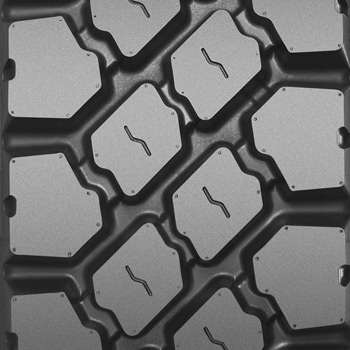

Generally speaking, there are two basic types of tread designs. One is built for fuel efficiency; the other for increased traction. (Most BFGoodrich® tires deliver a blend of both.) Depending upon your vehicle needs and operational conditions, we can help you choose the right design.

Characterization: Grooves are parallel to each other in the tread, ranging in tread depths from 11/32nds to 23/32nds, thus forming ribs.
Benefits: Usually significantly better for fuel economy, although does not provide enhanced wet or snow traction.
Position: Usually found on the steering axle of a truck/tractor and on other free rolling axles such as trailers, dollies, tag and pusher axles.

Characterization: Grooves placed laterally and perpendicular within the tread, ranging from 14/32nds to 32/32nds, creating lugs or blocks.
Benefits: Selected primarily for traction and improved mileage.
Position: Usually found on the drive or torque axle. The increased tread depth is needed to offset the scrubbing and/or spinning that can occur when power is transmitted to the drive axle.
Due to constant innovation and development, the types and sizes of BFGoodrich® tires are always changing. For the most current product offerings, please also refer to our Tire Selector.